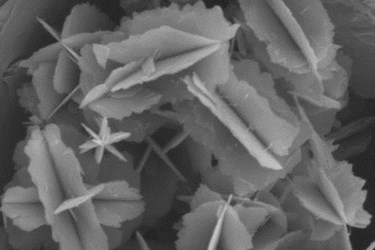Multi-Tasking Nanoparticle Combines Imaging And Therapeutics
By Chuck Seegert, Ph.D.

Using nanoparticles for diagnosis is a hot area of research, as is the use of nanoparticles for therapeutic delivery. Combining the two functions together in a single nanoparticle, however, is a new step forward from UC Davis researchers.
Nanoparticles in medicine have been around for some time. Gold-based particles have been used for treatments, as have other metals that can be guided by magnetic fields. There are some drawbacks associated with these, however, as they can have safety issues. Organic nanoparticles have been used to deliver drugs as well, and are biocompatible. Unfortunately, organic molecules haven’t been effective when used for diagnostic imaging.
The new nanoparticles developed by UC Davis researchers are based on a porphyrin/cholic acid polymer and are extremely well-tolerated, according to a recent press release. Porphyrins are ubiquitous in the body and choline is a byproduct of normal liver function. The combination of the two is stabilized by an amino acid called cysteine that keeps them from releasing drugs too soon and in the wrong area.
The nanoporphyrins (NPs) were tested for a number of functions with results published in Nature Communications. Doxorubicin, a common cancer drug, was bound to the NPs and then kept in blood for many hours. The NPs only released the doxorubicin when signaled to do so by light or the chemical glutathione. This allowed for the controlled release of the drug in only areas where it was needed, reducing systemic exposure and unnecessary toxicity to the patient.
Controlling release to local sites is facilitated by the size of the nanoparticles (about 32 nanometers), which is ideal for entering tumors while sparing normal tissue, according to the press release. Once inside the tumor, NPs are capable of releasing singlet oxygen (photodynamic therapy), a highly reactive form of oxygen that can damage tumor cells, while at the same time releasing heat (photothermal therapy). These therapeutic functions occur together when the NPs are hit by a single wavelength of light.
"These particles can combine imaging and therapeutics," said Yuanpei Li, a research faculty member involved with the project, in the press release. "We could potentially use them to simultaneously deliver treatment and monitor treatment efficacy."
As detailed in the study, tumor detection can be dramatically enhanced by increasing imaging sensitivity. This occurs through background suppression in blood and a preferential accumulation, which leads to an amplified signal in the tumors. Effects like these are seen in a number of imaging modalities including near-infrared fluorescence imaging, magnetic resonance imaging (MRI), positron emission tomography (PET), and dual mode PET-MRI applications.
"This is the first nanoparticle to perform so many different jobs," said Li. "From delivering chemo, photodynamic and photothermal therapies to enhancing diagnostic imaging, it's the complete package."
Nanoparticles are an up and coming part of medical research and have been used for the targeted generation of heat in cells. They have also been used as antibacterial implants by other research groups.
Image Credit: "Nanostars-it1302." Furmanj. 2007 Licensed under Creative Commons Attribution-Share Alike 3.0: http://creativecommons.org/licenses/by-sa/3.0/
